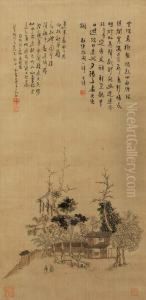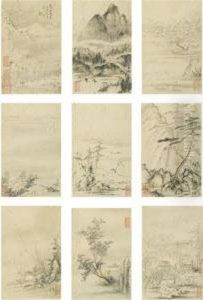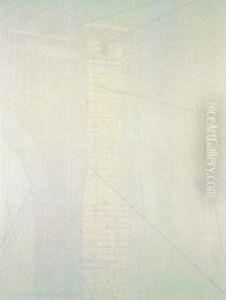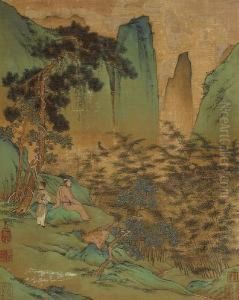Gao Xiang Paintings
Gao Xiang was a Chinese painter during the Qing Dynasty, known for his contributions to the art of shan shui, or traditional Chinese landscape painting. Born in 1688, Gao Xiang came of age in a period marked by significant changes in China’s political and cultural landscapes, as the Qing Dynasty, established by the Manchu people, consolidated its rule over the Han Chinese majority.
Gao Xiang was a native of Zhejiang Province, a region with a rich cultural and artistic heritage. He was born into a family with a tradition of scholarly pursuits and painting. This background provided him with a strong foundation in the literary and artistic traditions that were essential for a successful painting career in his time. Gao Xiang’s work was deeply influenced by earlier masters, particularly those of the Song and Yuan dynasties, and he was known to emulate the styles and techniques of ancient painters, while also contributing his own innovations.
Gao's style was characterized by a delicate and refined approach to landscape painting. He excelled in depicting serene and misty river scenes, often with minute and intricate brushwork that captured the ethereal quality of China's natural landscapes. His compositions often featured rolling hills, tranquil waters, and remote pavilions, all rendered with a sense of poetic isolation and quietude that was appreciated by his contemporaries.
Despite his achievements, Gao Xiang did not achieve the same level of fame as some of his contemporaries, such as the Four Wangs, who were renowned for their landscape paintings during the same period. Nonetheless, Gao Xiang's contributions to Chinese art were significant, and his works continued to be valued by collectors and connoisseurs in subsequent generations.
Gao Xiang passed away in 1753, leaving behind a legacy that would influence later artists. His paintings are now considered to be exemplary works of Qing Dynasty art and are held in various museums and private collections around the world. Through his work, Gao Xiang demonstrated the enduring appeal of traditional Chinese landscape painting and its capacity for both historical reverence and personal expression.




